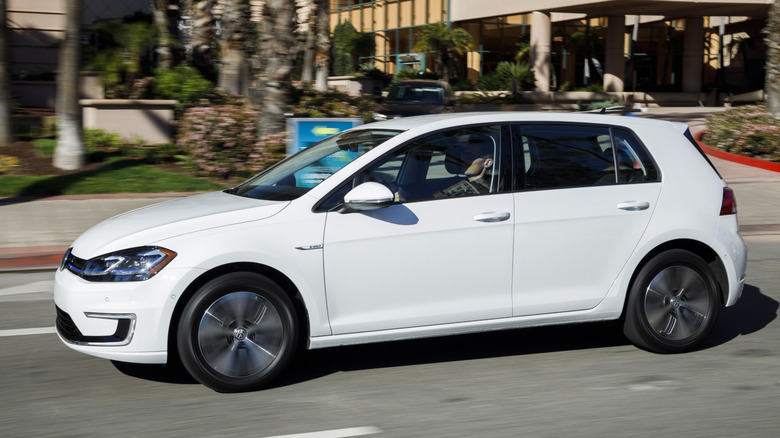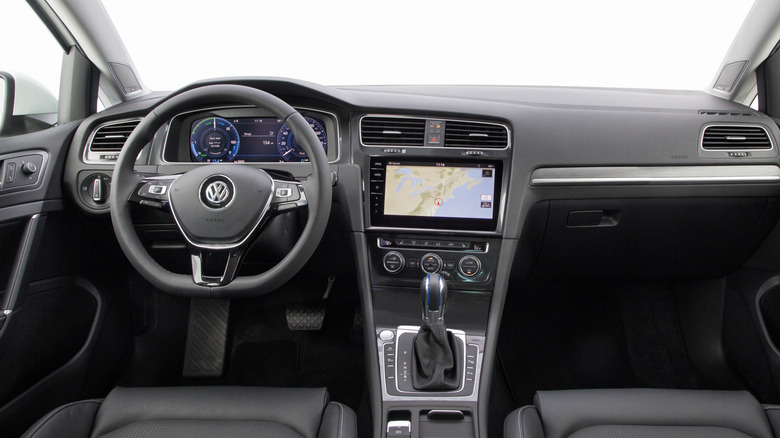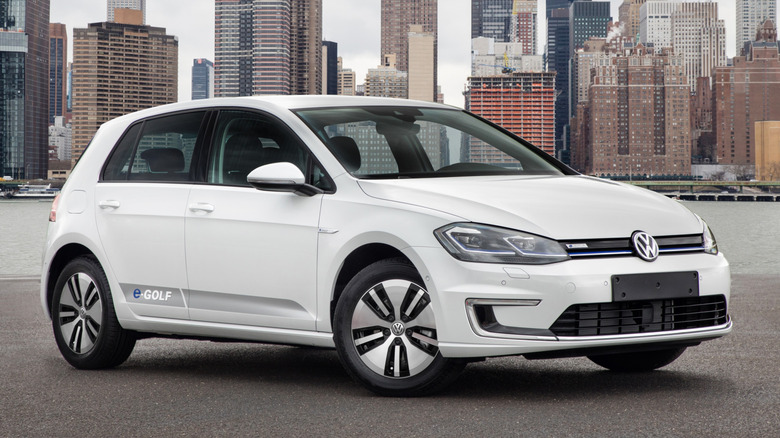How Many Years Did Volkswagen Make The E-Golf? (And What Does One Cost Today?)
Volkswagen is pretty big on electric vehicles, if you haven't heard. From the retro-styled ID.Buzz van to the ID.4 SUV and other new electric models being introduced for markets around the world, Volkswagen, like many other automakers, is heavily invested in a transition away from gasoline cars and toward electric ones.
But Volkswagen's first electric vehicle for the US market, the 2015 to 2019 e-Golf, took a much safer approach to the EV mission by offering an electric powertrain choice as just one part of the larger Mk7 Golf family. And though the e-Golf doesn't have the driving range, horsepower, or flashy features you get in modern electric vehicles, it has remained a popular choice on the used car market, with prices for later models hovering between $10,000 to $20,000.
Let's take a look at the history and evolution of the Volkswagen e-Golf and discover why many owners still hold this early EV in such high regard.
A Volkswagen Golf, but electric
Back in the 2010s, many automakers' first attempts at EVs used their existing gasoline platforms modified to be electric. In contrast, the Mk7 Golf, which rode on VW's ubiquitous MQB platform, was engineered from the get-go with EV variants in mind.
The e-Golf launched for the 2015 model year, making 115 hp and 199 lb-ft of torque, with an EPA-rated range of 83 miles. For the 2017 to 2019 models, Volkswagen upgraded the E-Golf with a larger battery and a more powerful electric motor. Output jumped to 134 hp and 214 lb-ft of torque, with an EPA range of 125 miles.
Though its range and horsepower look paltry by today's standards, the e-Golf's numbers were similar to other inexpensive EVs of the period, like the Ford Focus EV or Fiat 500e. Many buyers appreciated just how normal the e-Golf was; it looked a lot like any other Mk7 Golf, and didn't have any funky styling or strange controls to learn. And, unlike other gas cars converted to EVs, the battery didn't take away cargo or passenger space. The Focus EV, for example, lost a lot of its cargo volume due to the battery placement.
The e-Golf drove just like an Mk7 Golf, too. It wasn't fast but had plenty of torque for city driving. On top of that, the E-Golf rode well, handled well, and had a nice amount of space inside. It had all the qualities that made the gasoline Mk7 Golf so popular, just with electric motors.
A used EV bargain?
Volkswagen only sold the e-Golf for just one generation, and shifted its efforts to its more ambitious "Intelligent Design" line of dedicated electric vehicles after the 2019 model year. But even though it's now been over five years since the last new e-Golf was built, the compact EV can still make for a great buy today.
On the used market, the earlier 2015 and 2016 models can easily be had for under $10,000, with several examples popping up with prices around $8,000. The updated 2017-2019 e-Golfs with their added power and range naturally fetch more money on the used car market, but are still quite cheap. Those can be found easily for under $15,000, with even the nicest, lowest-mileage examples still priced under $20,000.
Of course, buying a cheap used EV may not always be the best idea, and the e-Golf's limited range means that there are better used EV options for those with long commutes or who plan to take road trips. But if you are looking for an inexpensive city car or a comfortable local commuter with that great Volkswagen Golf DNA built in, a used e-Golf could be a great choice.


